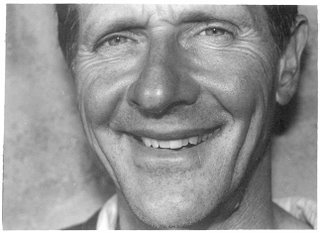One of the great gifts of life is breath.
Or is it, one of the great gifts of breath is life.
Or, is life breath.
Or, is breath life?
You know, you can get into long and pseudo interesting discussions about, “What is life?” But not here. Not today.
 Grape arbor in the Garden Park. Photo: Richard Dale.
Grape arbor in the Garden Park. Photo: Richard Dale.
Look at this nice photograph. This is the grape arbor I designed a number of years ago, when the garden was just a bunch of dirt and most visitors spent all their time under some nice oak trees in the back of the garden (it’s five acres of land, and the gardened part is – now-- about three acres.) They liked it back there because there was no work. I put in a path, a main path, a central axis and brought the picnic tables from the oaks to the center of the garden. The path was a hit. The path could be better, so I stuck in some grape cuttings along the edge and wondered if they’d grow.
They did.
Then, Richard Dale, director of the Sonoma Ecology Center, whose photographs you see a lot in these blogs, came out and helped me construct an arbor for the grapes with bent rebar. Then the grapes grew up and covered them and now we have a very magical pathway into the garden.
What does that have to do with breathing? One thing needs another. Breathing in needs breathing out. We need oxygen, plants need our outbreath. The plants need the soil, the soil, needs the plants. The grapes grow, breathing in and breathing out. We tend them, breathing in and breathing out.
All this is movement.
The Feldenkrais Method takes this wonderful idea: to move it to be alive, and to improve movement is the improve life.
And an even more wonderful idea: let’s improve this movement and this life, not by Doing it (whatever movement we are doing) the Right Way, but by exploring and learning, by discovering for ourselves, what is a better way, what are possibilities, what are options.
Nature is the model in having many pathways to get to the same aim, whether it is many species to achieve flying or eating up dead stuff, or many ways a grape vine can grow to survive and then thrive.
There are many ways we can grow and then thrive.
One of them is by being aware of what we are doing while we are doing it. Even as I type these words, I can be aware of my fingers moving and the sounds of the keys clicking. Click. Click. Click. Dogs are barking outside, my spine is holding up my head.
I’m breathing in and breathing out.
The grapes are done for the season, it’s Halloween today, the end of October. The day of the dead comes soon. The vines will die back, as if an outbreath in a season’s breath cycle. You breathe in and out, I breathe in and out.
And everyone who has notices the glory of life for thousands of years has noticed the breath and the moment and the seasons. Many have taken the juice of the grape, fermented it, and become even more enthusiastic about life.
So be it.
To breathe and move and be aware is a little slower than wine, but it will get you there, get you high.
And is getting high a big purpose in life?
Not necessarily, but it’s nice, especially if we can get there on our own, if we can release our own “feel good” chemicals inside.
And what’s one of the best ways of doing that? To be kind to others is one. The be at one with nature is another. To learn is a third. This is the goal and the heart of the Feldenkrais Method, taking small (or sometimes large) movements and learning from them about how we are hooked together as human beings, about who we are as breathers and movers in the world, and most especially, who we are as learners in the world. Learning how to improve by being thrilled and fascinating with the process and not worrying about improving.
Breathing in, breathing out and underneath it all: the Earth. Gravity. Holding us down, keep us connected to the Mother, letting us know who we are, creatures in gravity and in air . Light, too, the sun has its own message. Gravity below, light above, food for the grapes and the plants and the people of this planet, and in between, air giving us one thing and the plants another and we are feeding each other, the plants and the people, through our breathing, and other ways.
And sometimes we forget.
And sometimes we remember.
Life on Earth. Ah, good.




